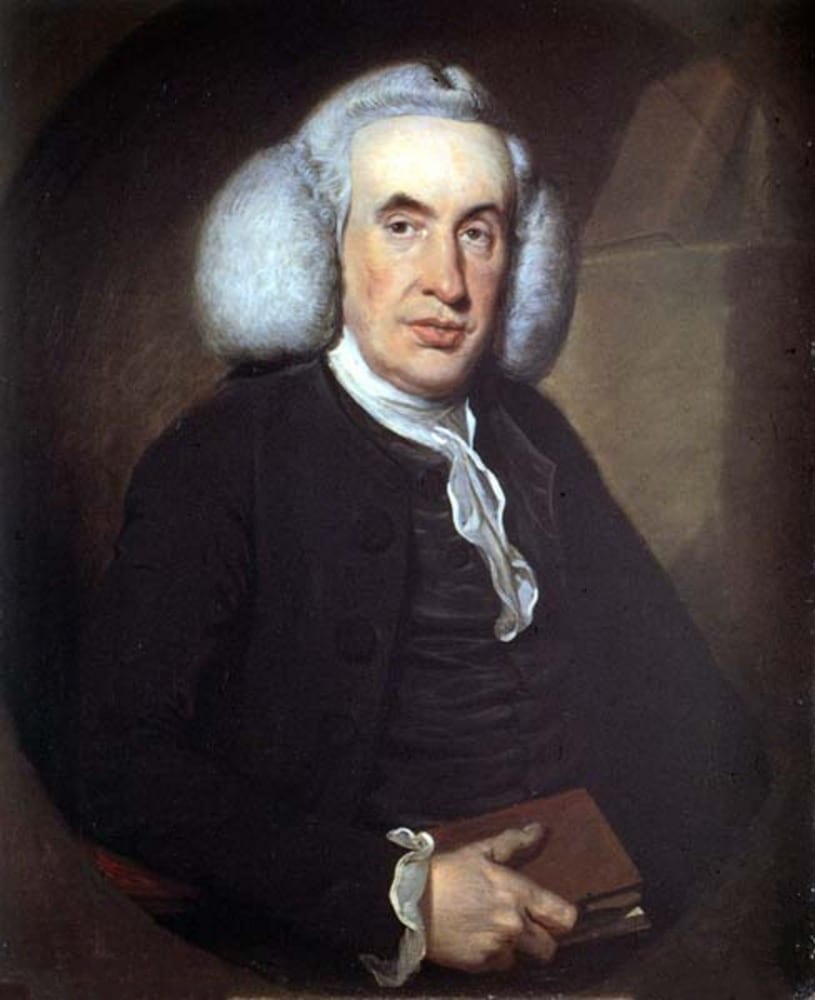 |
| William Cullen. 18th century. Unknown author. Via Wikimedia. |
William Cullen ranks high among the illustrious members of the Scottish Enlightenment. Friend of Adam Smith and physician of David Hume, president of the Royal College of Physicians of Glasgow and later of Edinburgh, he was appointed physician to the King in Scotland and became one of the most popular professors at the University of Edinburgh. He published several textbooks on medicine and was also interested in chemistry, botany, and agriculture.1,2
He was born in 1710 at Hamilton, southeast of Glasgow, where his father was a lawyer. At the local grammar school, he excelled on account of his prodigious memory. He entered the University of Glasgow at seventeen and presumably studied humanities and mathematics.2 He was then apprenticed to an apothecary surgeon, as was the custom in those days for those aspiring to enter the profession of medicine. On turning nineteen in 1729, he set sail as ship’s surgeon on a two years’ trading voyage to the West Indies. On his return to London he spent several months with an apothecary to improve his knowledge of drugs. In 1732 he moved in with a relative in a village near his home town and worked there for a time as a general practitioner, then coming into a small inheritance devoted himself to the study of philosophy and literature. Between 1734 and 1736 he studied medicine in Edinburgh. Upon graduating he returned to his home town, Hamilton, and for seven years had a general medical practice.
In his practice, Cullen was partner for some time with the surgeon and anatomist John Hunter, who later moved to London where he became famous. In 1740 Cullen obtained his doctorate of medicine from Glasgow, and four years later he moved there with the aim of lecturing in medicine and practicing as a physician. He was appointed professor of medicine in Glasgow in 1751, and in 1766 was invited to become a professor at the University of Edinburgh, where he had an exceptional career.
Cullen taught chemistry, which in his time had just passed out of the phase of alchemy but recognized only the four primary elements of earth, air, fire, and water.2 As a result of his studies in botany, he acquired Linnaeus’ interest in classification, or taxonomy. This led to his Methodical Nosology publication of 1766, in which he classified diseases by their symptoms along lines comparable to those of Linnaean botany. Diseases were classified into four large groups: fevers, neuroses (a term that he introduced), cachexias (such as scurvy), and local diseases (such as cancer). This was an artificial scheme that did not long survive its author.2 More original and positive were Cullen’s early studies and insights into the function of the nervous system. At the time it was believed that muscles were continuous with the substance of the medulla and were energized by a substance that passed along nerves from the brain to the periphery.2
In Edinburgh, Cullen had a highly successful career as a teacher and consulting physician. Already in Glasgow, he had departed from the universal custom of lecturing in Latin and spoke in English. During his seventeen years as a professor, he was the teacher of many illustrious physicians and his reputation was such that he came to be regarded as the most famous physician and teacher of medicine in Europe.2 Some of his biographers have commented that despite his high reputation, his name cannot be associated with any one discovery or revolutionary advance in medicine; nor is his name linked with any anatomical structure, disease, syndrome, or physical sign. Indeed, Cullen’s sign of hemorrhagic extravasation around the umbilicus from intraperitoneal hemorrhage derives its name from the observations of the nineteenth-century American gynecologist, Thomas Stephen Cullen (1869–1953). But William Cullen is remembered as a man of great native ability, tenacious memory, inexhaustible industry, and unresting pursuit of knowledge, as well as for the logical and methodical character of his thinking, which are the attributes of a great professor and physician.2
References
- Doyle D. William Cullen (1710-1790) JR Coll Physicians Edinb. 2010;40:89
- Johnstone, R. W. William Cullen*. William Hunter Memorial Lecture delivered to the Glasgow Obstetrical and Gynaecological Society, 18 September 1957. Downloaded from https://www.cambridge.org/core.
GEORGE DUNEA, MD, Editor-in-Chief
Highlighted in Frontispiece Volume 13, Issue 1 – Winter 2021
Summer 2020 | Sections | Physicians of Note

Leave a Reply